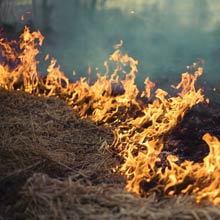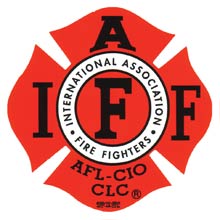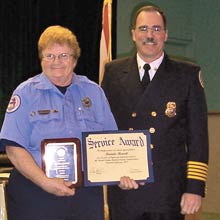
Marion County Fire Rescue is celebrating its 30th anniversary. While three decades sure seems like a long time, when you consider that the City of Boston Fire Department was founded in 1678 and FDNY in 1865, MCFR is a mere babe. Yet thanks to the efforts of Gene Gallant, M. Stuart McElhaney, and countless other firefighters over the years, this young department is a model of progress and professionalism in the state.
Journey back to 1979. Gloria Gaynor’s “I Will Survive” blasted from your Sony Walkman and the movie Kramer vs. Kramer won the best picture Oscar. Jimmy Carter was president. Gas was 86 cents a gallon. The Three Mile Island nuclear accident in Pennsylvania rocked the country, and Margaret Thatcher became the first female prime minister of Great Britain.
Locally, about 100,000 people called Marion County home. Silver Springs and Six Gun Territory were Florida’s premier tourist attractions, and construction of the Paddock Mall was nearing completion. The 9-1-1 system didn’t exist, so if you witnessed a traffic accident, you drove to the nearest pay phone and called the fire department directly, praying someone would answer and respond.
Marion County leaders struggled with its 20-plus, all‑volunteer independent fire departments. Turf wars pervaded many regions of the county. Departments were severely understaffed and relied on donations and fish-fry fundraisers to raise money. Often, one fire engine would respond to a house fire with only one or two firefighters on board. The department’s uniforms consisted of jeans, sneakers, and T-shirts, and the firefighters’ secondhand bunker gear was all donated.
Eventually, Marion County’s volunteer departments started to unite under one countywide system, and Marion County Fire Rescue (MCFR) was born. Now, when citizens need help, they can expect a quick, skillful response from MCFR’s 500-plus full-time emergency responders and 65 dedicated volunteers. These men and women respond to structure, brush, and vehicle fires; medical emergencies involving cardiac arrest, respiratory distress, and trauma; vehicle accidents requiring extrication; natural disasters; and many other emergencies.
They also provide advanced life support (ALS) emergency medical care and ambulance transport to the hospital. They can jump start a heart when it has stopped beating, breathe for a patient whose airway is compromised, and administer medicine to ease pain.
MCFR now serves 1,600 square miles and 330,000 citizens as the second-largest fire rescue department north of Orlando. But before looking ahead to the next 30 years, enjoy this glimpse into the first three decades.
.jpg)
First Chief
Gene Gallant was Marion County Fire Rescue’s first fire chief, though at the time, his title was “Fire Coordinator.” Hired in October 1978, the now 84-year-old was responsible for uniting Marion County’s 20-plus independent volunteer fire departments. Gallant is humble when describing his accomplishments, though. He created the first fire budgets, working to remove jurisdictional boundaries to ensure the closest department would respond. He also centralized training and started to find funding for protective gear such as breathing apparatus for firefighters.
.jpg) Pay Day
Pay Day
Wearing the first badge ever issued and earning $4.25 an hour, Robert Desmarais became Marion County Fire Rescue’s first paid firefighter on March 2, 1979. Through the pains of progression, Desmarais remained a constant—always ready to perform his job with excellence. Desmarais retired on June 24, 2005.
 Patchy Past
Patchy Past
Marion County Fire Rescue’s first patch featured what’s known as the fire triangle of the three elements needed to sustain fire: heat, a fuel source, and oxygen. Now, the fire triangle is referred to as a tetrahedron because it includes a fourth element, an uninhibited chemical chain reaction.
 Hot Rods
Hot Rods
Ingenuity. That describes Marion County volunteer firefighters. When they had no money for fire trucks, they’d build their own. Whatever the hardship, they overcame. They converted jet fuel tanker trucks into fire rescue pumpers, tractor trailers into fire trucks, and pick-up trucks with spare parts welded together into grass trucks. Now, MCFR has more than 180 emergency vehicles and an aggressive refurbishing program, saving taxpayers millions of dollars.
.jpg) A Life-Saving Investment
A Life-Saving Investment
It’s like a bank account, except you deposit blood instead of cash. The Marion County Volunteer Chiefs’ Association opened a blood bank account in 1983 at the Florida Blood Centers to benefit Marion County firefighters. Hopefully, no firefighters or their family members will need to make a withdrawal, but if they do, their fellow firefighters have offered the gift of life. Currently, the account has 396 credits; that’s more than 50 milk jugs.
 Black Friday—The Day Florida Burned
Black Friday—The Day Florida Burned
Mother Nature and mankind collided on May 17, 1985, sparking one of the largest wildfires in Florida history. Statewide, the fire engulfed more than 100,000 acres in one day, destroyed 143 homes, and forced more than 1,000 evacuations, including neighborhoods throughout the Ocala National Forest.
 A United Voice
A United Voice
Despite the controversy, Marion County Fire Rescue’s 35 paid firefighters voted to unionize in the late-1980s, seeking representation from the International Association of Firefighters. Local 3169 received its charter in 1988, and Lyndel Scheibly was the first union president. The firefighters’ union didn’t settle its first contract until November 15, 1994. But now, Local 3169 has more than 486 dues-paying members.
The Evolution Of 9-1-1
To the technology generation, payphones are antiques, and many teens can’t imagine life without their cell phones. But just 20 years ago, these gadgets and other more important life-saving technology didn’t exist. 9-1-1 was first initiated in Marion County in 1989, and law enforcement dispatched for fire rescue. But in 1996, MCFR formed its own dispatching team, and Pamela Trousdale was the department’s first communications coordinator. In 2001 and 2003, respectively, Marion County also became one of the first counties in Florida to become what’s known as “Phase I” and “Phase II” Enhanced 9-1-1 compliant. This technology enables dispatchers to more precisely track the longitude and latitude of a 9-1-1 caller who is using a cell phone.
.jpg)
Captain Clifford
Captain Clifford Grier should be nicknamed Smiley because he’s the most optimistic and cheerful person you’ll ever want to meet. As MCFR’s first African-American firefighter, he’s faced racial hardships, but he’s never let discrimination slow him down. Grier served in the U.S. Army Military Police Corps and later the Washington D.C. Police Department before moving to Marion County. Grier has earned the rank of captain and proudly serves the southwest district, which includes Friendship, Marion Oaks, Golden Ocala, Meadowood Farms, and Rainbow Springs.
.jpg) A Shocking Save
A Shocking Save
She died, but then lived another 11 years. In July 1991, 70-year-old Hilda Slade’s heart stopped beating. Rodney Mascho and Angie Sweeney of Anthony Station 1 arrived at the scene and used a new piece of equipment called an automatic external defibrillator (AED). Within five minutes, Mascho and Sweeney provided an electrical shock to Slade’s heart and saved her life.
Marion County Fire Rescue had only four AEDs at that time, but now the department has more than 100 life-saving devices that can restart the heart. Mascho is now a training captain, and Sweeney is a senior investigator for MCFR.
 SERT‑ifiably Safe
SERT‑ifiably Safe
In the early 1990s, Lt. David Cooper and volunteer firefighter Bart Walker, now both MCFR division chiefs, recruited 15 firefighters, researched free training opportunities, and purchased an old mini Pepsi delivery truck with grant funds. With their creativity and persistence, the Special Emergency Response Team (SERT) was formed. In 1994, the SERT became two highly distinct teams, one specializing in hazardous materials mitigation and the other in technical rescue. Now, MCFR is one of only 32 Regional Hazardous Materials teams in Florida, and the department leads North Central Florida’s involvement with Task Force 8, which specializes in technical rescue.
.jpg) The Real Deal
The Real Deal
When M. Stuart McElhaney became Marion County Fire Rescue’s fourth fire chief on February 28, 1994, at age 38, he defied all expectations. The geologist for Shell Oil Company and volunteer assistant chief for the Cy-Fair Volunteer Fire Department in Texas transformed MCFR, offering a fresh perspective and an unyielding work ethic.
At the time, the department’s 110 paid firefighters and 350 volunteer firefighters lacked credibility. A rift between the firefighters’ union and administration grew, and about one-third of the fire fleet needed to be retired.
Within his first year on the job, McElhaney’s leadership provided much needed stability and direction. The firefighters’ union settled its contract after six years of cantankerous negotiations, and McElhaney made firefighter training a top priority.
 Better Emergency Care
Better Emergency Care
Mediocre and status quo just aren’t part of Chief McElhaney’s vocabulary. Prior to his arrival, MCFR provided only basic life support (BLS) medical care, including bandaging, splinting, and CPR. In less than a year, McElhaney upgraded this BLS status to advanced life support (ALS), significantly improving emergency medical care. This ALS status enables MCFR’s paramedics to become the eyes, ears, and hands of the emergency room physician, providing life saving techniques and medications in a pre-hospital setting. MCFR requires all of its firefighter/EMTs to become paramedics within five years of their hire date.
 It Burned for Days
It Burned for Days
The heat twisted steel beams and Marion County firefighters needed more than 7,000 gallons of water a minute to drown the fire. Crews couldn’t pump the water fast enough, and the Florida Seed and Feed warehouse off Baseline Road burned for at least three days in 1995. The fire caused a reported $10 million in damage. The 75,000 square-foot farm supply company did not have a sophisticated sprinkler system now required of all new commercial buildings of this size. The fire started after a pallet of supplies piled too closely to a broken light caught fire.
 Family Tradition
Family Tradition
Deputy Chief David K. Cooper (right) and his son, David W. Cooper (left), became the first father and son to serve Marion County Fire Rescue. The two have more than three decades of combined service. Dispatcher Greg Mosher and Firefighter Craig Mosher are the department’s first brothers. They have a combined four decades of experience.
 Cogon Conflagration
Cogon Conflagration
Nothing will kill it, and animals won’t eat it. In the winter, it becomes so dry that firefighters fear it. Cogon grass fires are less common now due to development, but in March 1996, a half-mile-wide cogon grass fire burned 500 acres in Silver Springs Shores. The fire caused a reported $100,000 in damage, traveled nearly three miles, damaged five homes, and injured two citizens. The outcome prompted changes to MCFR’s wildfire tactics and called for better inter-agency communication and training.
.jpg) Task Force Takes Off
Task Force Takes Off
Just before the unprecedented 1998 wildfire season, the Marion County Multi-Agency Wildland Task Force was formed. The task force met on a routine basis to discuss wildfire conditions, call load, manpower capabilities, wildfire tactics, and public education campaigns. In 2007, the National Association of State Foresters, the U.S.D.A. Forest Service, and the Advertising Council presented the task force with a coveted bronze Smokey Bear award, recognizing this unique partnership.
 In The Line Of Duty
In The Line Of Duty
On February 7, 2001, Ray Lloyd Jr. of Florida Highlands Station 5 responded to a mobile home fire and started to hook up his tanker truck to a fire engine when he suddenly fell to the ground. He suffered a heart attack and never regained consciousness. Lloyd, 65, died that day, becoming Marion County Fire Rescue’s first and only line-of-duty death. On September 22, MCFR honored Lloyd’s memory and named Station 31 off Highway 484 after him.
.jpg) Preparing For The Worst
Preparing For The Worst
The terrorist attacks on September 11, 2001, changed fire rescue departments across the world. The activation of North Central Florida Task Force 8 has better prepared local responders for worst-case scenarios. The 72 team members, including firefighters from Marion County Fire Rescue, Ocala Fire Rescue, Gainesville Fire Rescue, and Alachua County Fire Rescue, have the equipment and training to search for and rescue victims trapped in collapsed structures.
 First Medal For Valor
First Medal For Valor
MCFR Lt. Rose Teetsell is courageous and steadfast, putting others’ needs above her own. She became the department’s first Medal of Valor recipient after rescuing disabled veteran Paul Rasmussen from a burning van in July 2001.
 10-Year Goals
10-Year Goals
Explosive growth and demand for better emergency response prompted Marion County Commissioners to adopt a 10-year plan for Marion County Fire Rescue that took effect October 1, 2001. Since then, commissioners and fire rescue leaders have upheld and even exceeded promises to hire additional firefighters, build new fire stations, and relocate existing fire stations to address emergency response concerns. Over the last eight years, MCFR has hired an average of 30 new firefighters every year, built new stations, relocated other stations, significantly renovated some stations, and converted formerly all-volunteer stations into full-time fire stations.
 Farm Inferno
Farm Inferno
Instead of a 6am gallop around the racetrack at Ocala Stud Farm, 22 Thoroughbred racehorses never made it to the starting gate. A barn fire erupted on February 23, 2002, killing all 22 horses inside. “Unbridled,” the 1990 Kentucky Derby and Breeders’ Cup Classic winner who was trained at Ocala Stud, was the sire of two of the Thoroughbreds that died in the fire.
 The Ferocious Four
The Ferocious Four
No one will soon forget the 2004 hurricane season when four storms targeted Florida in less than eight weeks. Following Hurricanes Frances and Jeanne, MCFR firefighters tirelessly performed tasks that don’t typically fall under their job description. When not responding to 9-1-1 calls, they removed trees and debris from houses and driveways, patched roofs, and delivered bottled water and food to citizens.
 Teenage Hotshots
Teenage Hotshots
Marion County Fire Rescue provides on-the-job training to high school students through the Fire and EMT Career Academy, a partnership with Central Florida Community College and Marion County Public Schools. During their senior year of high school, Career Academy students take the National Fire Protection Association (NFPA) Firefighter I and Emergency Medical Technician (EMT) classes.
Though dozens of students have graduated from the program, Firefighter/Paramedic Kevin Christensen (inset) was the first Career Academy student to land a job with MCFR in 2005. To help other students like Kevin complete their training, MCFR and Local 3169 started offering a $1,000 scholarship named in honor of U.S. Army Specialist Robert Edward Blair. Blair wanted to become an MCFR firefighter after returning from Iraq, but sadly, Robert died in Iraq on May 25, 2006.
Life Lines
Communication and cooperation are the two Cs needed to succeed when responding to emergencies. To ensure that the closest units are sent to every emergency, MCFR implemented formal automatic and mutual aid agreements with neighboring fire departments, including The Villages Public Safety Department in January 2006 and the City of Ocala in February 2007.
 First Female Retiree
First Female Retiree
EMT Brenda Hewett retired from Marion County Fire Rescue in February 2007, becoming the department’s first woman to reach this milestone.
A Mega Upgrade
Marion County Fire Rescue updated its radio communication system from the VHF/UHF analog system to the latest 800 megahertz digital system by Motorola in February 2007. This technology offers expanded coverage, more frequencies, improved reception, and increased security.

A Hot Job
Marion County Fire Rescue made dreams come true for nearly 50 professionals who wanted to become firefighters but couldn’t afford the training. Department leaders initiated a Fire and EMT Academy for non-certified individuals in 2007. The idea? Recruit local candidates who have roots in North Central Florida, making them more likely to stay in and give back to this community. Recruits earned a paycheck while they completed their seven months of training. The program was so successful that MCFR hosted a second academy in 2008.
 Ambulance Activation
Ambulance Activation
The emergency tones sounded and dispatcher Debbie Pando’s voice came through the loud speaker—“As a new day dawns on October 1, 2008, the Marion County Board of County Commissioners through Marion County Fire Rescue (MCFR) will hereafter provide emergency medical transport services to all Marion County citizens, including those living in Belleview, Dunnellon, McIntosh, Reddick, and the city of Ocala.”
This announcement commemorated one of the most significant events in Marion County history—the day MCFR took over the ambulance services. MCFR became the county’s premier transport agency October 1, when the previous ambulance service, known as the Emergency Medical Services Alliance (EMSA), dissolved.
Editor’s Note:Special thanks to the Star-Banner, the Tampa Tribune, and all the former and current volunteer firefighters and MCFR employees who shared their stories for this feature article. MCFR’s everyday contributions to society often mean the difference between life and death.
Want To Know More?
(352) 291-8000
heather.danenhower@marioncountyfl.org
elaine.deiorio@marioncountyfl.org






